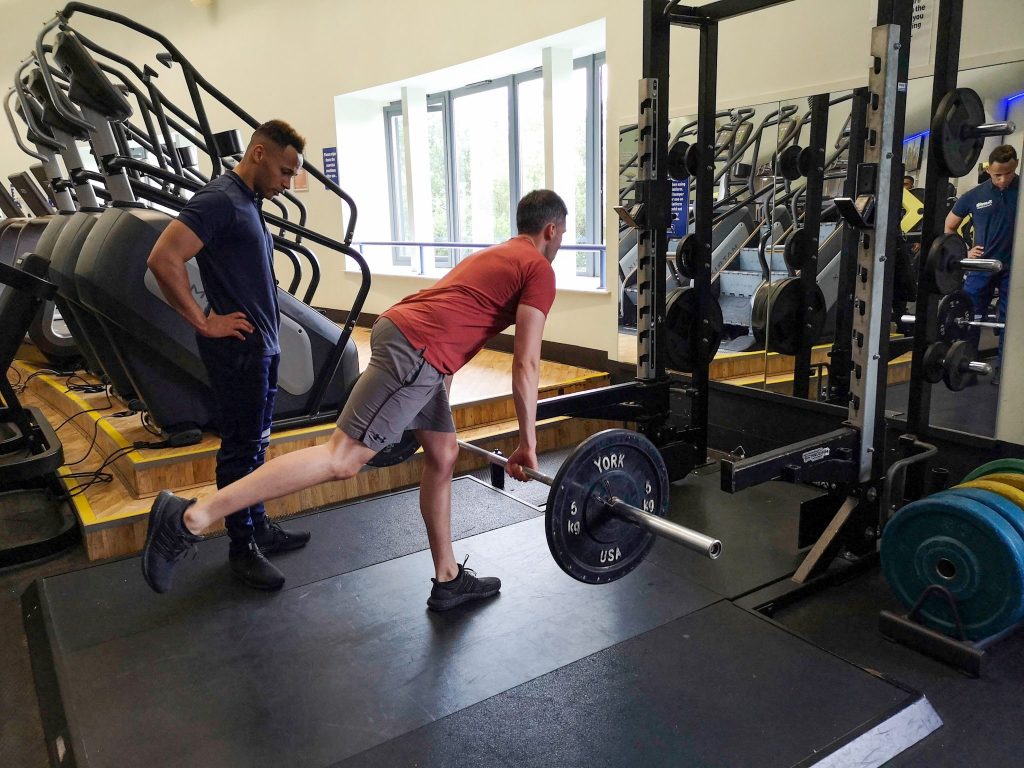How Strengthening Exercises Optimise Recovery and Performance
Strengthening exercises play a crucial role in optimising recovery and performance for individuals engaged in physical activities, whether it be athletes, fitness enthusiasts, or individuals undergoing rehabilitation.
IN This Blog wE'Ll explore the various ways in which strengthening exercises contribute to the enhancement of recovery and performance, and will delve into the physiological, biomechanical, and psychological aspects of their impact.
Introduction to Strengthening Exercises
Strengthening exercises encompass a wide range of activities designed to enhance the strength, power, and endurance of muscles and connective tissues.
These exercises can include resistance training, weightlifting, bodyweight exercises, and other forms of physical activity aimed at increasing the force-generating capacity of the musculoskeletal system.
When performed with proper technique and under the guidance of a qualified professional, strengthening exercises have been shown to yield numerous benefits for individuals looking to optimise their recovery and performance.

Strengthening Exercises: PHYSIOLOGICAL ADAPTATIONS
Engaging in strengthening exercises elicits a series of physiological adaptations within the body. One of the primary adaptations is the development of muscle hypertrophy, which refers to the increase in muscle size and cross-sectional area. This process occurs in response to the mechanical tension placed on the muscle fibres during resistance training. As a result, the muscles become better equipped to generate force, withstand external loads, and resist fatigue, all of which are essential for recovery and performance optimisation.

Furthermore, strengthening exercises stimulate improvements in neuromuscular function, including enhanced motor unit recruitment, synchronization, and firing frequency.
These adaptations contribute to greater coordination, stability, and control during movement, thereby reducing the risk of injury and enhancing overall performance.
Additionally, the increased activation of motor units leads to greater force production, which is particularly beneficial for athletes and individuals seeking to improve their athletic prowess.
Biomechanical Considerations in Strengthening Exercises
From a biomechanical perspective, strengthening exercises exert a profound influence on the musculoskeletal system. By subjecting the body to controlled and progressive loading, these exercises promote the development of stronger bones, tendons, and ligaments. This is achieved through the process of mechanotransduction, wherein mechanical forces are converted into biochemical signals that stimulate the synthesis of bone mineral and the remodeling of connective tissues.
Moreover, strengthening exercises contribute to improvements in movement efficiency and biomechanical alignment. For instance, exercises targeting specific muscle groups can address muscular imbalances and asymmetries, which are common contributors to injury and suboptimal performance. By enhancing the structural integrity and functional capacity of the musculoskeletal system, strengthening exercises lay the foundation for robust and resilient physical performance.
Role of Strengthening Exercises in Recovery OptimiSation
In the context of recovery, strengthening exercises play a multifaceted role in facilitating the restoration of physical function and reducing the likelihood of recurrent injuries. Following intense physical activity or injury, the implementation of targeted strengthening exercises can aid in the rehabilitation process by promoting tissue healing, restoring neuromuscular control, and preventing muscle atrophy.
In addition, the performance of strengthening exercises has been shown to enhance blood flow to the muscles, facilitating the delivery of oxygen and nutrients essential for tissue repair and recovery. This increased blood flow also promotes the removal of metabolic by-products such as lactic acid, which can accumulate during exercise and contribute to muscle soreness and fatigue. As a result, individuals engaging in strengthening exercises may experience expedited recovery times and reduced post-exercise discomfort.

Psychological Benefits of Strengthening Exercises
In addition to the physiological and biomechanical effects, strengthening exercises offer notable psychological benefits that can positively impact recovery and performance. Regular participation in resistance training has been associated with improvements in mood, self-esteem, and body image perception. It is well known that participating in regular exercise can increase serotonin and dopamine levels, but the sense of accomplishment derived from progressing in strength and physical capabilities can contribute to enhanced motivation and adherence to training regimens, which are integral to long-term performance optimisation.

Moreover, the structured and goal-oriented nature of strengthening exercises can instill a sense of discipline and focus, fostering mental resilience and fortitude.
This mental fortitude can be instrumental in navigating the challenges of recovery from injury or setbacks, as well as in maintaining a positive mindset during the pursuit of performance-related goals.
Training and Rehabilitation Programs
The integration of strengthening exercises into training and rehabilitation programs requires a systematic and individualised approach to address the unique needs and goals of each individual.
For athletes and fitness enthusiasts, periodised resistance training programs can be designed to target specific performance outcomes, such as strength development, power enhancement, or muscular endurance. These programs typically incorporate a variety of exercises, including compound movements, isolation exercises, and plyometric drills, to comprehensively address the physiological and biomechanical demands of the activity or sport.
In the context of rehabilitation, strengthening exercises are tailored to address the specific impairments and functional limitations of the individual. This may involve the use of progressive resistance, functional movements, and neuromuscular re-education to restore optimal movement patterns and physical capacity. The gradual progression of exercise intensity and complexity is carefully managed to ensure that the individual can safely and effectively rebuild strength and function following injury or surgery.

CONCLUSION
In conclusion, the optimization of recovery and performance through strengthening exercises is underpinned by a myriad of physiological, biomechanical, and psychological mechanisms. The development of muscle hypertrophy, improvements in neuromuscular function, and enhanced biomechanical integrity contribute to the physical robustness and force-generating capacity of the body.
Moreover, the psychological benefits of strengthening exercises, including improved mood, motivation, and mental resilience, complement the physiological adaptations to create a holistic approach to recovery and performance optimisation.
It is evident that the incorporation of strengthening exercises into training and rehabilitation regimens is a fundamental component of achieving and sustaining optimal physical function and performance. By understanding the diverse ways in which strengthening exercises influence the body, individuals can make informed decisions regarding their exercise programming and rehabilitation strategies, ultimately leading to enhanced recovery and performance outcomes.
If you wish to seek further help or speak to a practitioner, call us on 0800 731 2738 or book online here.
You can also view all the services we provide within our clinics on our website, as well as checking out our other blogs and content.
For more free tips and information, make sure to follow our Facebook and Instagram pages. We also post client stories, so you can see how we’ve helped people get back to doing the things they enjoy!



